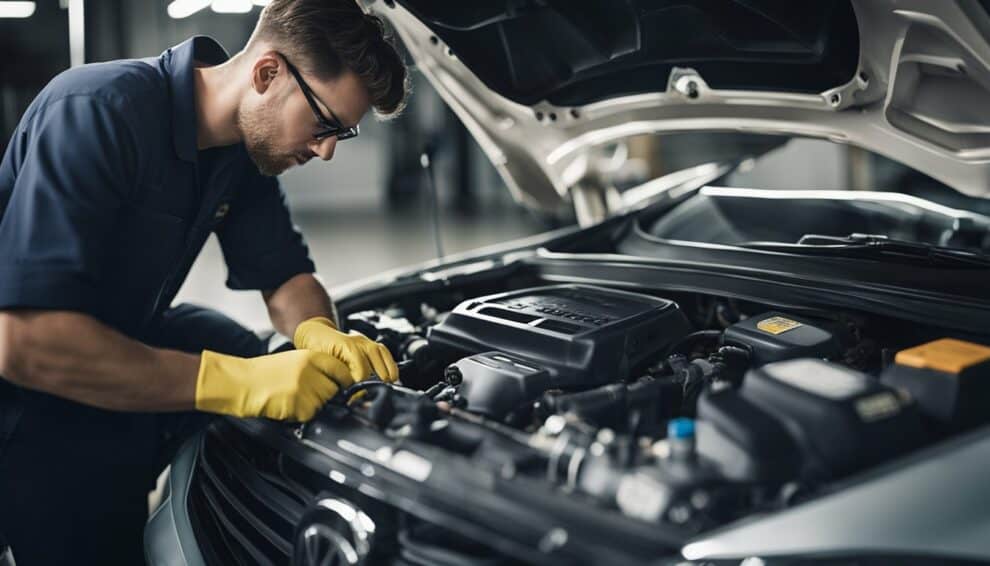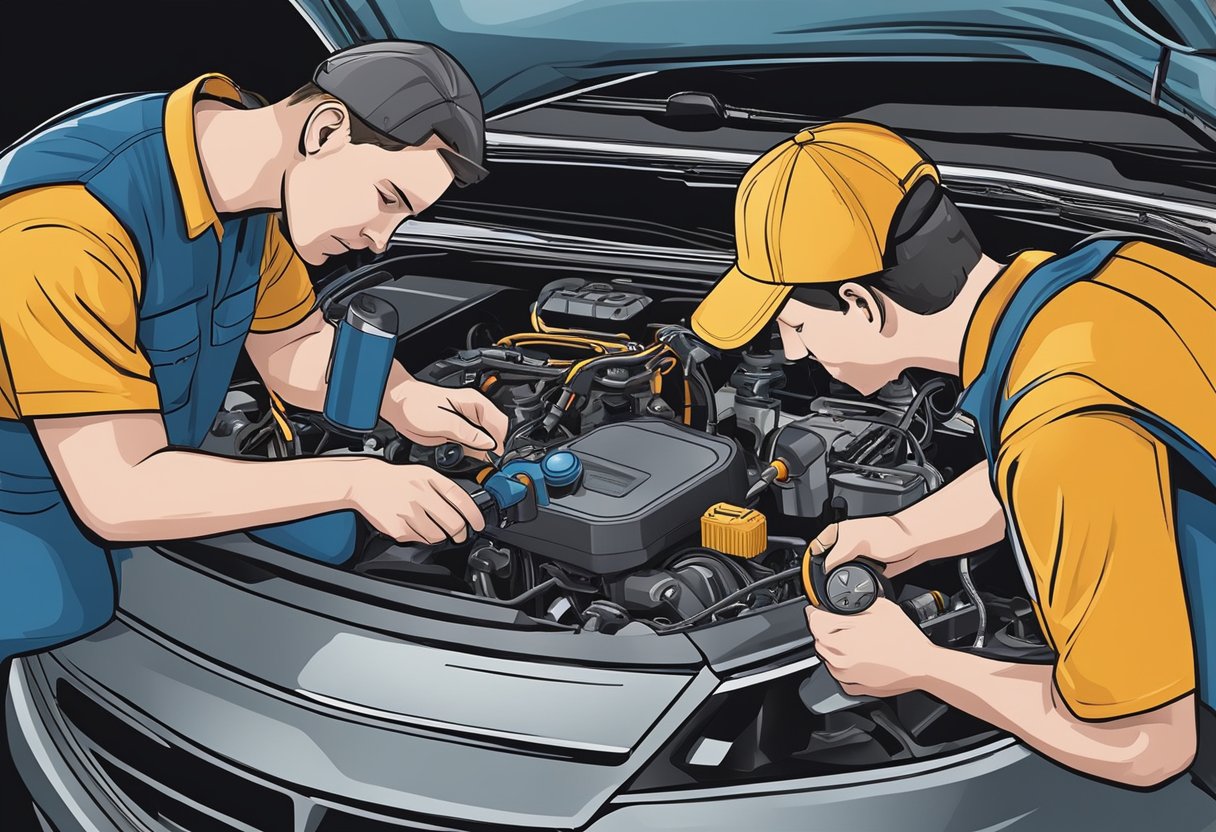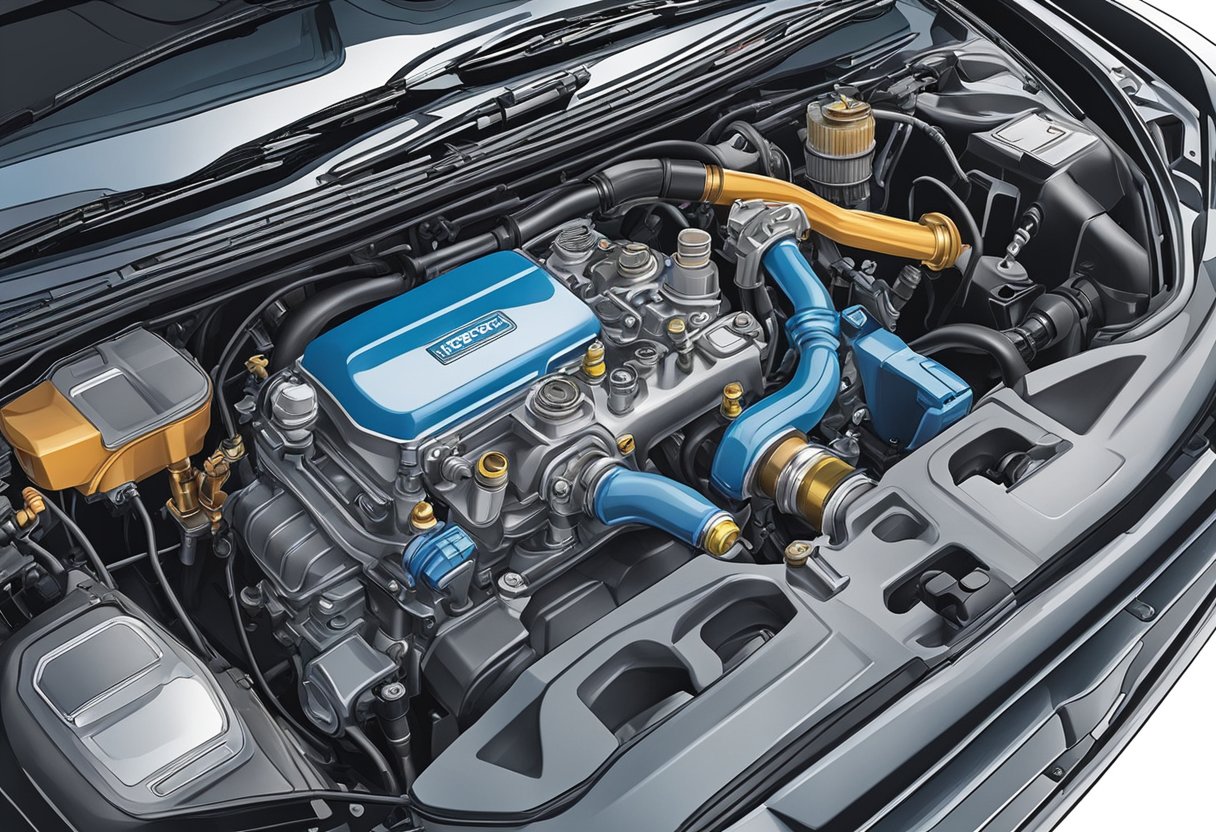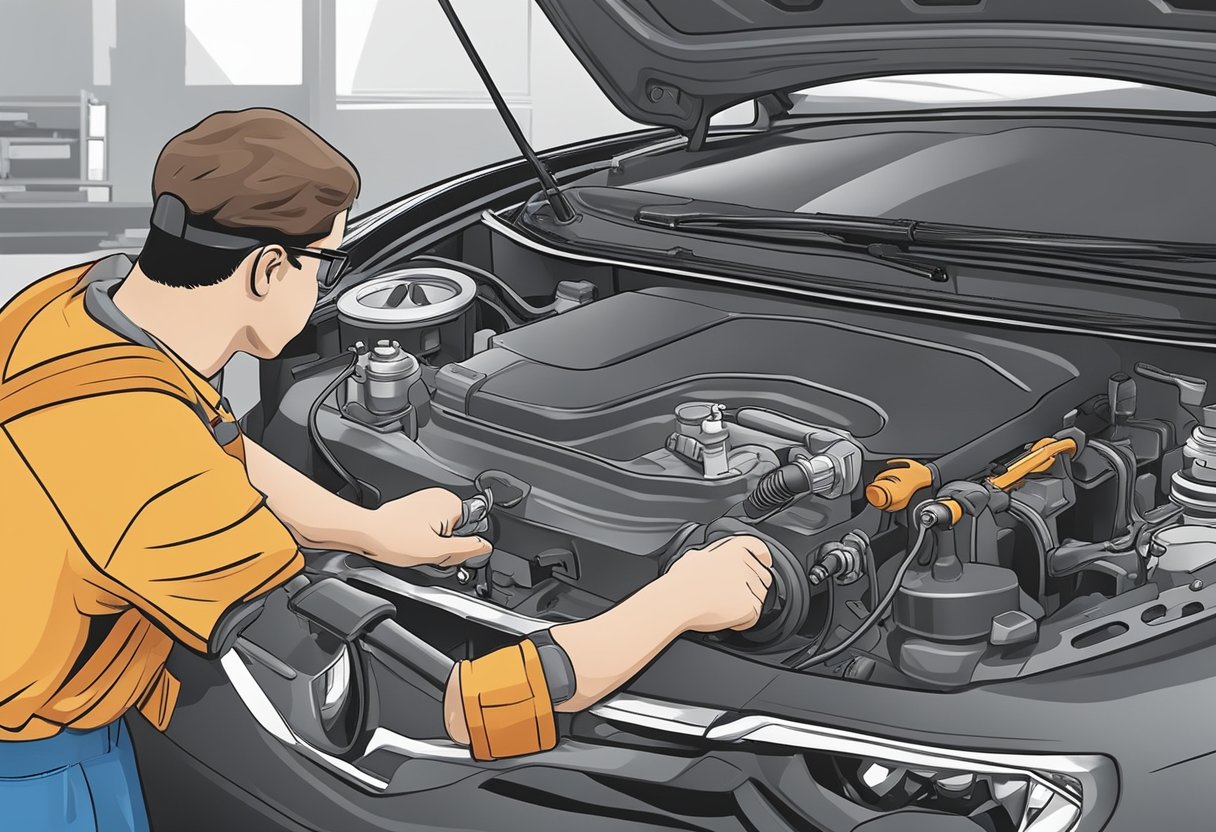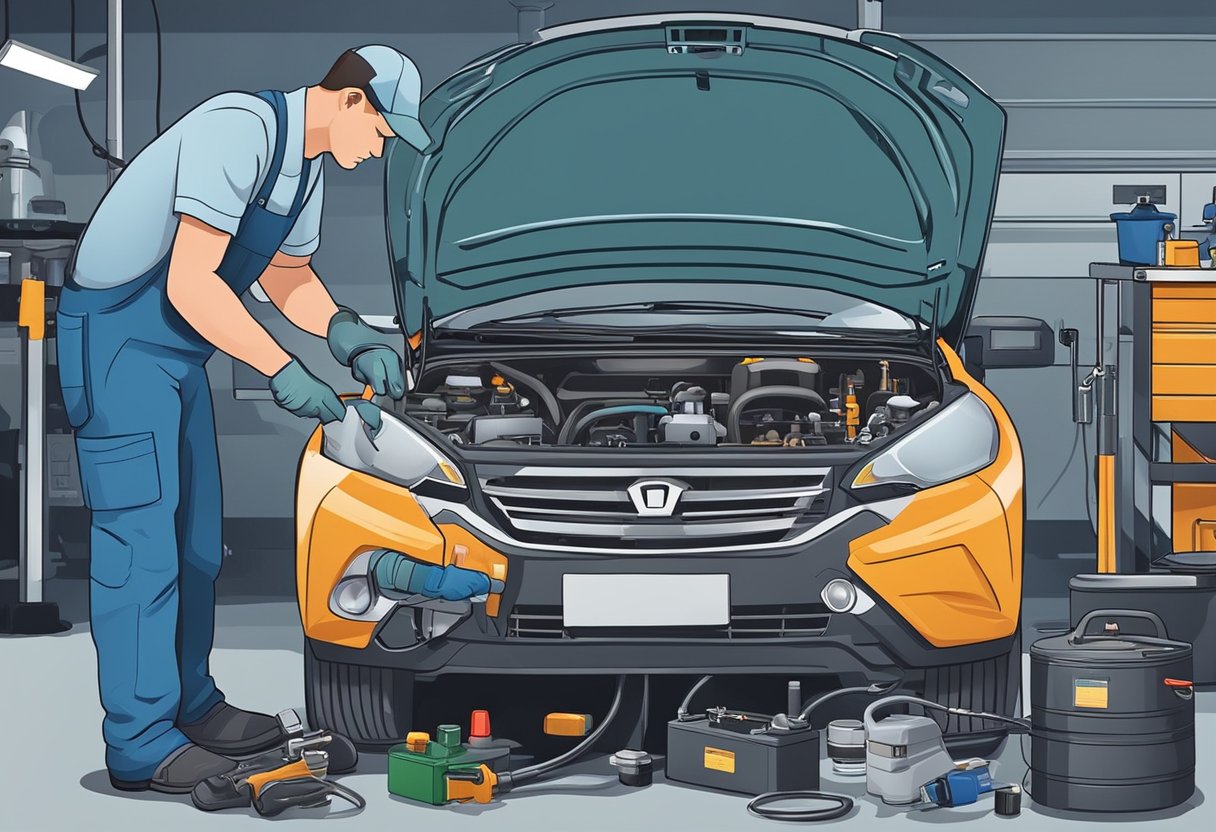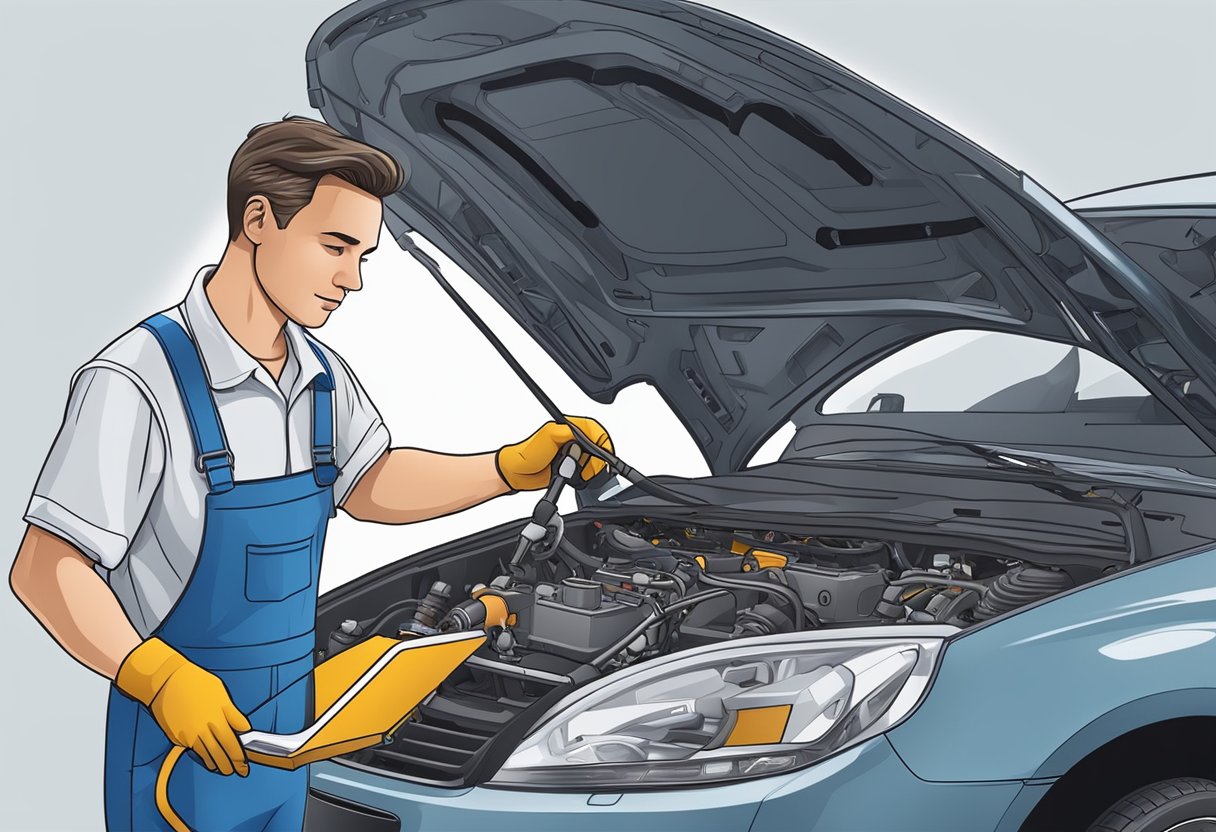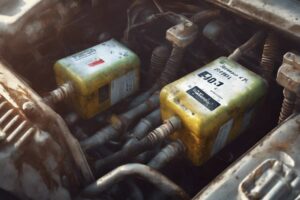If you’re experiencing issues with your vehicle’s evaporative emission system, you may have encountered the P0443 code. This code indicates a problem with the purge control valve circuit, which is responsible for controlling the flow of fuel vapors from the fuel tank to the engine. If left unresolved, this issue can lead to decreased fuel efficiency and even engine damage.
Fortunately, fixing the P0443 code is a relatively straightforward process. The first step is to identify the root cause of the problem, which could be a faulty purge control valve, damaged wiring, or a malfunctioning engine control module. Once the cause has been identified, the appropriate repairs can be made to restore your vehicle’s performance and efficiency. In this article, we’ll explore the common causes of the P0443 code and provide step-by-step instructions for fixing the issue.
Understanding the P0443 Code
Definition of the P0443 Code
The P0443 code is a diagnostic trouble code (DTC) that indicates a malfunction in the evaporative emission control system (EVAP). Specifically, the P0443 code indicates a problem with the purge control valve circuit, which is responsible for controlling the flow of fuel vapors from the EVAP canister to the engine intake manifold.
When the purge control valve circuit malfunctions, it can lead to a variety of problems, including reduced engine performance, decreased fuel efficiency, and increased emissions. As a result, it is important to address the P0443 code as soon as possible to prevent further damage to your vehicle and ensure that it runs smoothly.
Causes of the P0443 Code
There are several potential causes of the P0443 code, including:
-
Faulty purge control valve: The most common cause of the P0443 code is a faulty purge control valve. Over time, the valve can become clogged or damaged, preventing it from properly controlling the flow of fuel vapors.
-
Wiring issues: Another common cause of the P0443 code is wiring issues. If the wiring that connects the purge control valve to the engine control module (ECM) is damaged, corroded, or otherwise faulty, it can prevent the valve from functioning properly.
-
Failed ECM: In rare cases, the P0443 code may be caused by a failed ECM. If the ECM is unable to properly communicate with the purge control valve, it can cause the valve to malfunction and trigger the code.
To diagnose and fix the P0443 code, it is important to have your vehicle inspected by a qualified mechanic. They can use specialized diagnostic tools to identify the root cause of the problem and recommend the appropriate repairs.
Diagnosing the P0443 Code
Tools Required for Diagnosis
Before diagnosing the P0443 code, you will need a few tools to help you with the process. Here is a list of the tools you will need:
- OBD-II scanner
- Multimeter
- Wiring diagram for your vehicle
- Basic hand tools (screwdrivers, pliers, etc.)
Step-by-Step Diagnostic Procedure
If you have received a P0443 code, it means that there is a problem with the evaporative emission system purge control valve circuit. Here is a step-by-step diagnostic procedure to help you identify the issue:
-
Check the wiring: Use a multimeter to check the wiring for any damage or breaks. Make sure that the wiring is properly connected and there are no loose connections.
-
Check the purge control valve: Check the purge control valve for any damage or defects. Use a multimeter to check the resistance of the valve. If the resistance is outside of the manufacturer’s specifications, the valve needs to be replaced.
-
Check the vacuum lines: Check the vacuum lines for any damage or leaks. Make sure that the lines are properly connected and there are no loose connections.
-
Check the fuel tank pressure sensor: Check the fuel tank pressure sensor for any damage or defects. Use a multimeter to check the resistance of the sensor. If the resistance is outside of the manufacturer’s specifications, the sensor needs to be replaced.
-
Check the power supply: Check the power supply to the purge control valve. Make sure that the valve is receiving the proper voltage. If the voltage is outside of the manufacturer’s specifications, there may be an issue with the power supply.
By following these steps, you will be able to diagnose the P0443 code and identify the issue with the evaporative emission system purge control valve circuit.
Fixing the P0443 Code
If you’ve encountered the P0443 code, it’s likely that your vehicle’s evaporative emission system purge control valve circuit is malfunctioning. Fortunately, this problem can be resolved with some simple repairs. In this section, we’ll explore some common repair methods and how to replace the purge control valve.
Common Repair Methods
Before replacing any parts, it’s important to check for any damaged or corroded wiring and connections. A visual inspection can help identify any obvious issues. If you find any damaged wires or connections, repair or replace them as needed.
Another common issue is a faulty purge control solenoid. Testing the solenoid with a multimeter can help determine if it’s functioning properly. If the solenoid is faulty, it will need to be replaced.
Replacing the Purge Control Valve
If the purge control valve needs to be replaced, follow these steps:
- Locate the valve – The purge control valve is typically located near the engine’s intake manifold.
- Disconnect the electrical connector – Use a flathead screwdriver to release the locking tab and disconnect the electrical connector from the valve.
- Remove the vacuum lines – Use pliers to remove the vacuum lines from the valve.
- Remove the valve – Use a wrench to remove the bolts securing the valve to the engine.
- Install the new valve – Install the new valve in the reverse order of removal.
After replacing the valve, clear the code and test the system to ensure it’s functioning properly.
By following these repair methods, you can fix the P0443 code and get your vehicle’s evaporative emission system purge control valve circuit back in working order.
Preventive Measures and Maintenance
Regular inspection intervals and best practices for maintenance can help prevent the P0443 code from appearing. Here are some tips to keep your evaporative emission system in good working order.
Regular Inspection Intervals
Regular inspections can help detect potential issues before they become major problems. Here are some components of the evaporative emission system that you should inspect regularly:
- Purge control valve: Check for signs of wear or damage, such as cracks or leaks. Make sure the valve is functioning properly.
- Fuel tank: Look for signs of corrosion or damage. Check the fuel cap to ensure it is properly sealed.
- Vapor canister: Inspect for damage or leaks. Make sure the canister is properly mounted.
- Hoses and lines: Check for cracks, leaks, or other signs of wear. Replace any damaged components.
Best Practices for Maintenance
In addition to regular inspections, there are some best practices you can follow to keep your evaporative emission system running smoothly:
- Use high-quality fuel: Low-quality fuel can cause deposits to build up in the system, leading to clogs and other issues.
- Tighten the fuel cap properly: A loose or damaged fuel cap can cause the system to malfunction.
- Avoid overfilling the tank: Overfilling the tank can cause fuel to enter the vapor canister, leading to damage.
- Follow the manufacturer’s recommended maintenance schedule: Regular maintenance, such as replacing the fuel filter and inspecting the system, can help prevent issues from occurring.
By following these preventive measures and maintenance tips, you can help keep your evaporative emission system in good working order and prevent the P0443 code from appearing.
Troubleshooting Tips
Avoiding Common Mistakes
When dealing with the P0443 code, there are a few common mistakes that you should avoid to prevent further issues. One of the most common mistakes is replacing the purge control valve without first checking the wiring and connections. Before replacing any parts, make sure to check the wiring and connections for any damage or corrosion.
Another common mistake is replacing the wrong component. The P0443 code can be caused by a faulty purge control valve, but it can also be caused by a faulty vent valve, leak detection pump, or even a damaged fuel tank pressure sensor. Make sure to perform a thorough diagnosis before replacing any components.
When to Seek Professional Help
While troubleshooting the P0443 code can be done at home, there are some instances where it may be best to seek professional help. If you do not have experience working with automotive electrical systems, it may be best to take your vehicle to a professional mechanic.
Additionally, if you have already replaced the purge control valve and the code persists, it may be an indication of a more serious issue. In this case, a professional mechanic will have the tools and expertise to diagnose and repair the issue.
Overall, when dealing with the P0443 code, it is important to take your time and perform a thorough diagnosis before replacing any components. By avoiding common mistakes and knowing when to seek professional help, you can save time and money in the long run.
As an Amazon Associate we earn from qualifying purchases.







